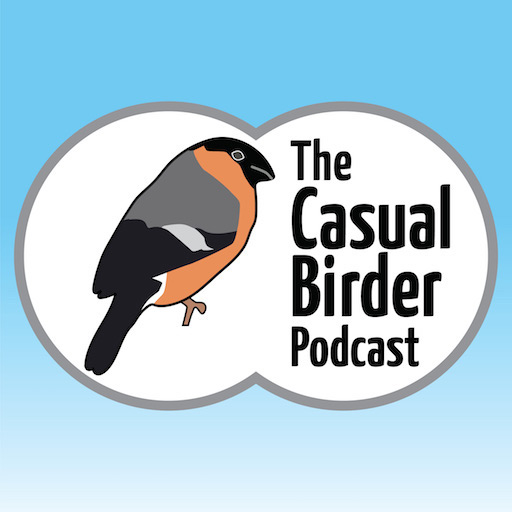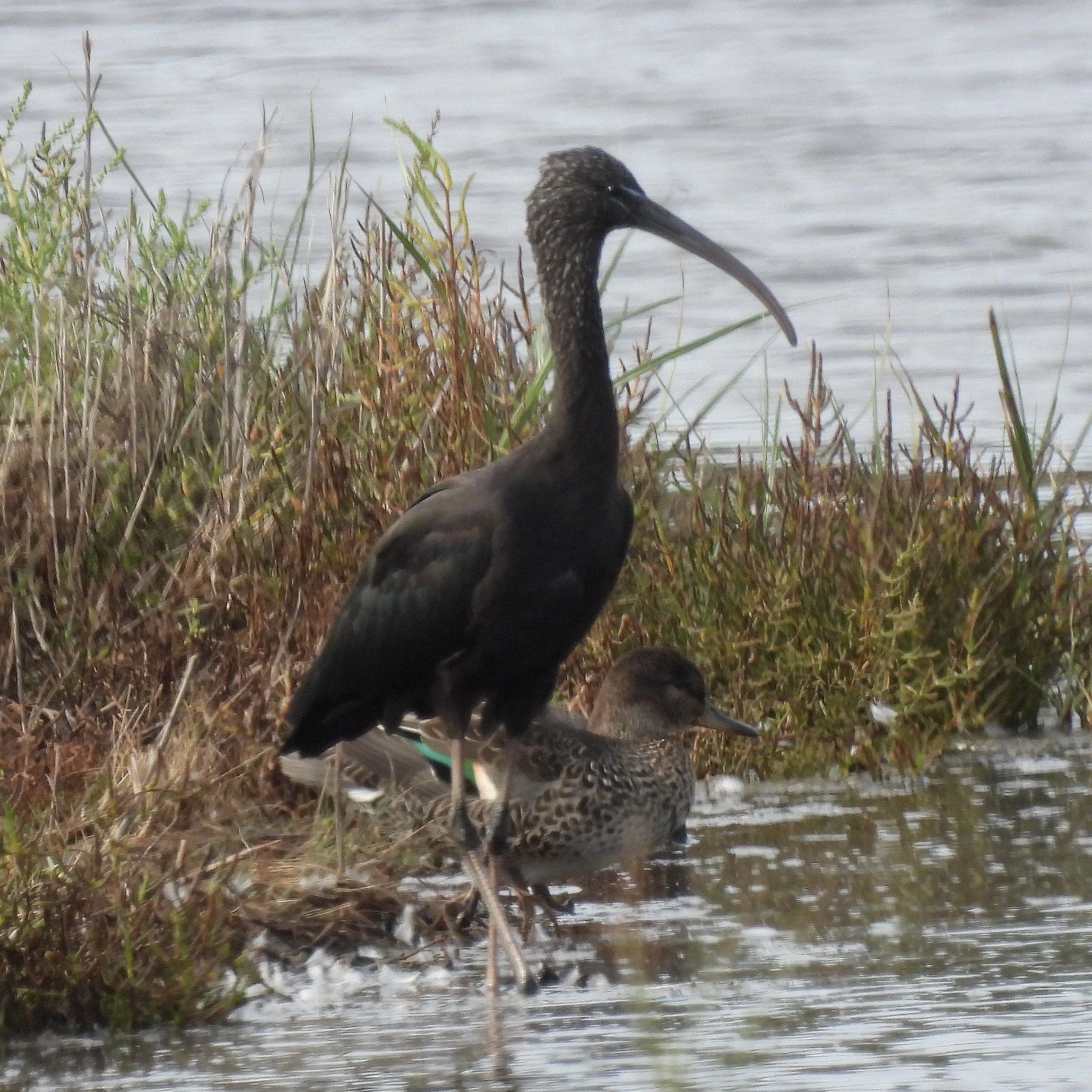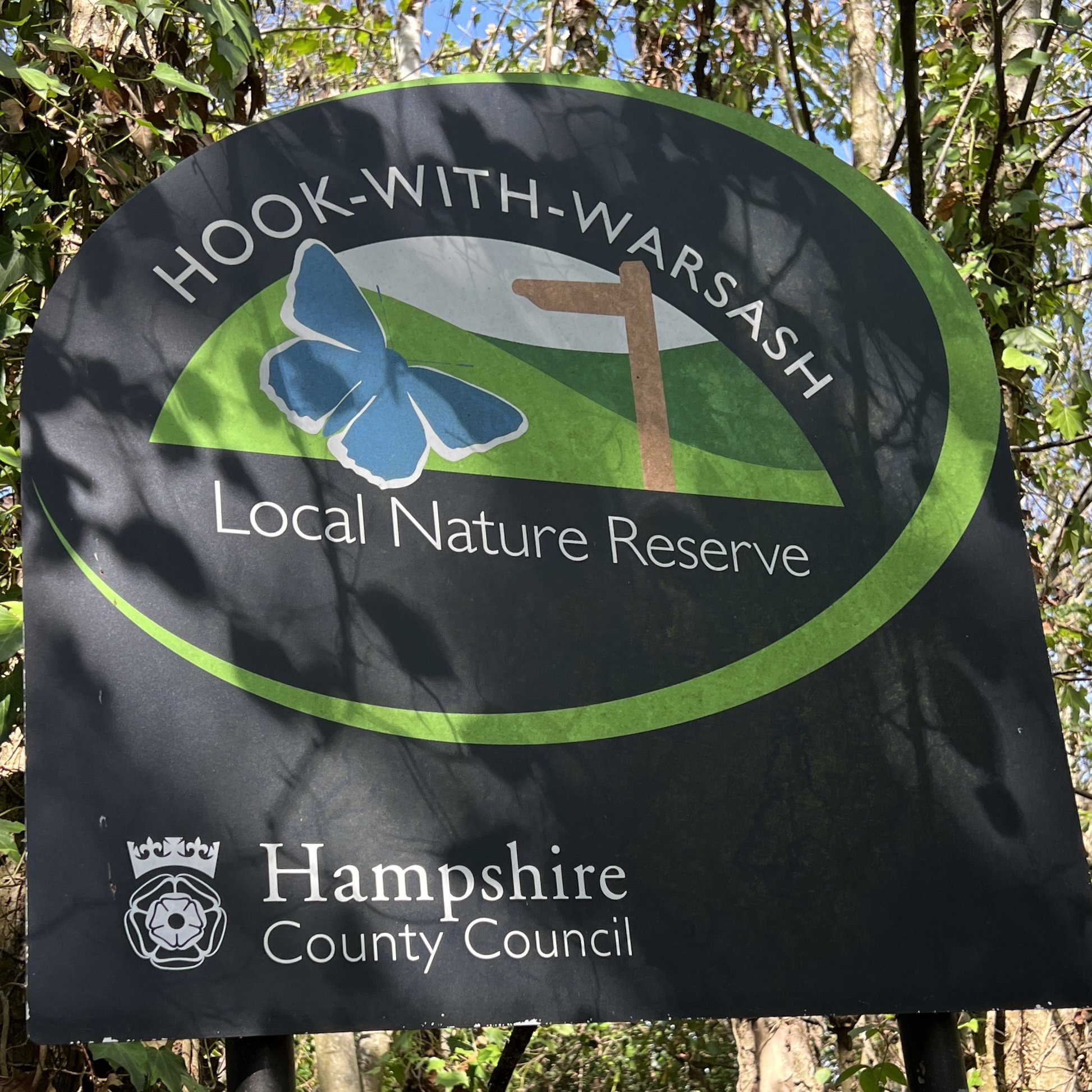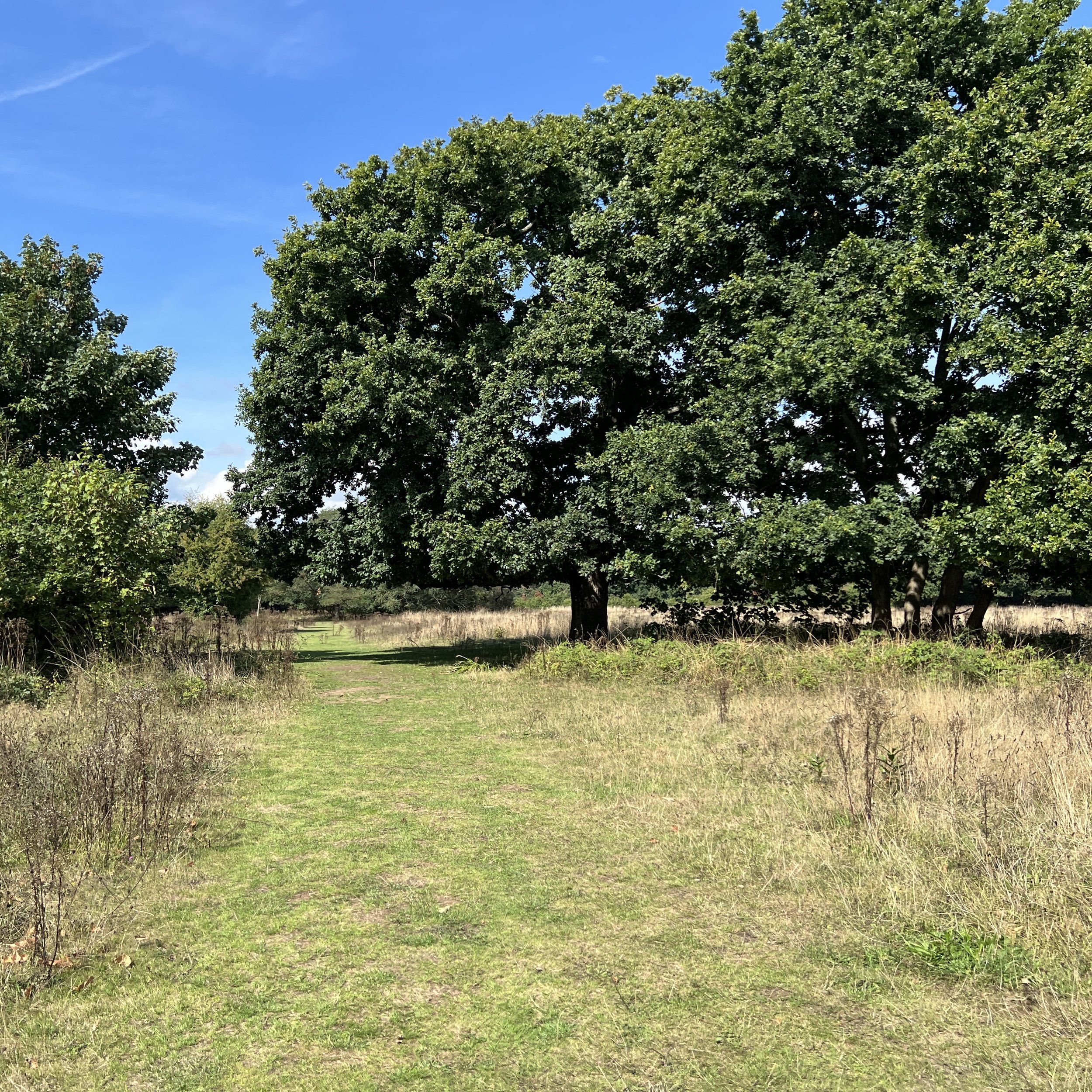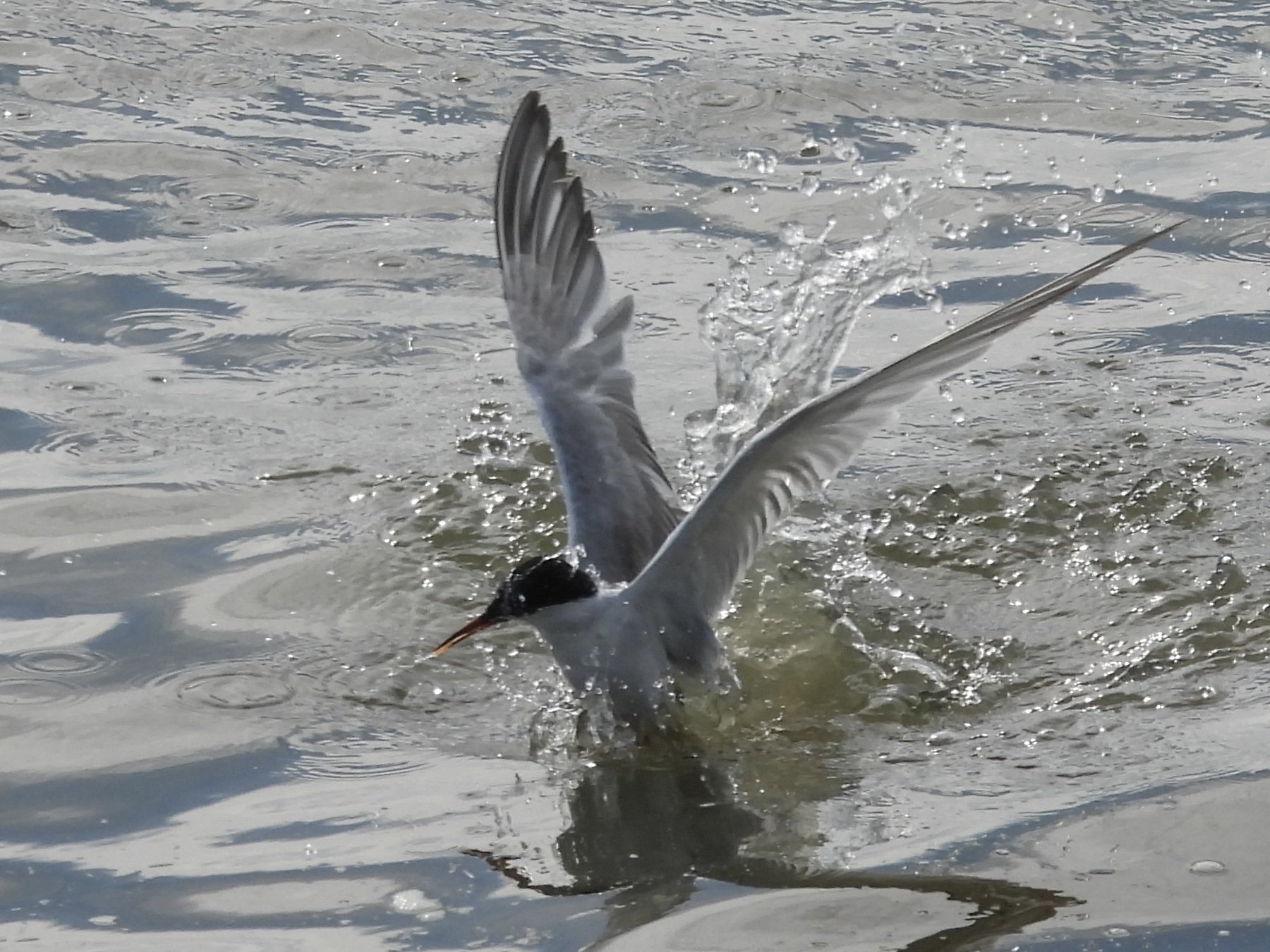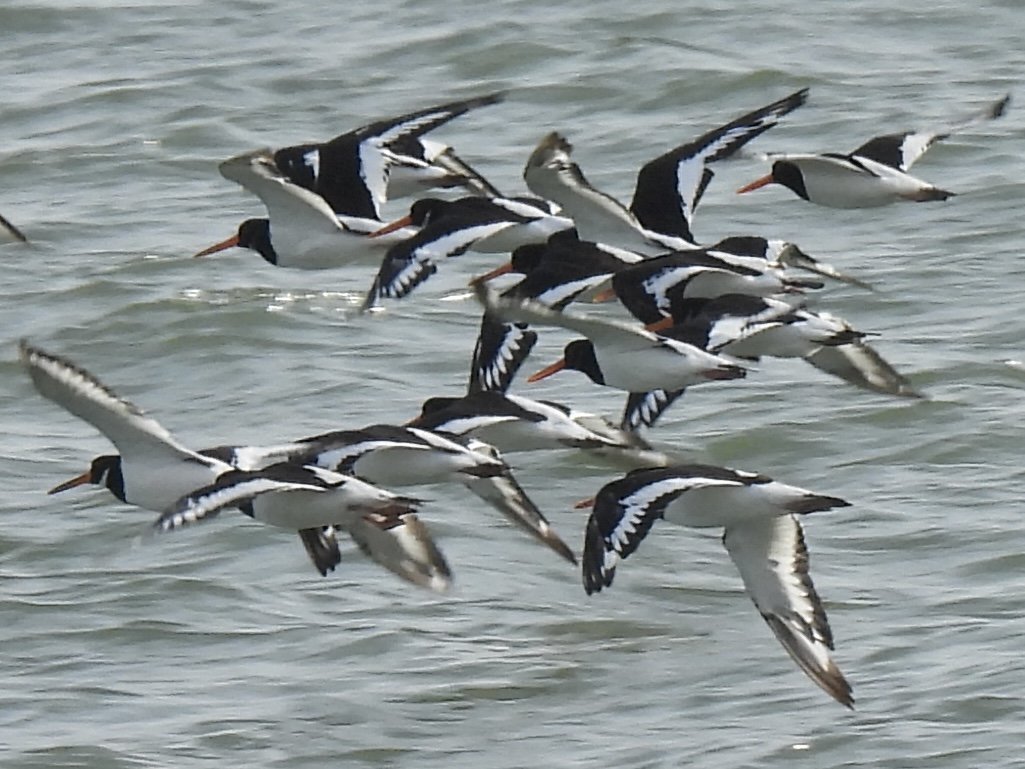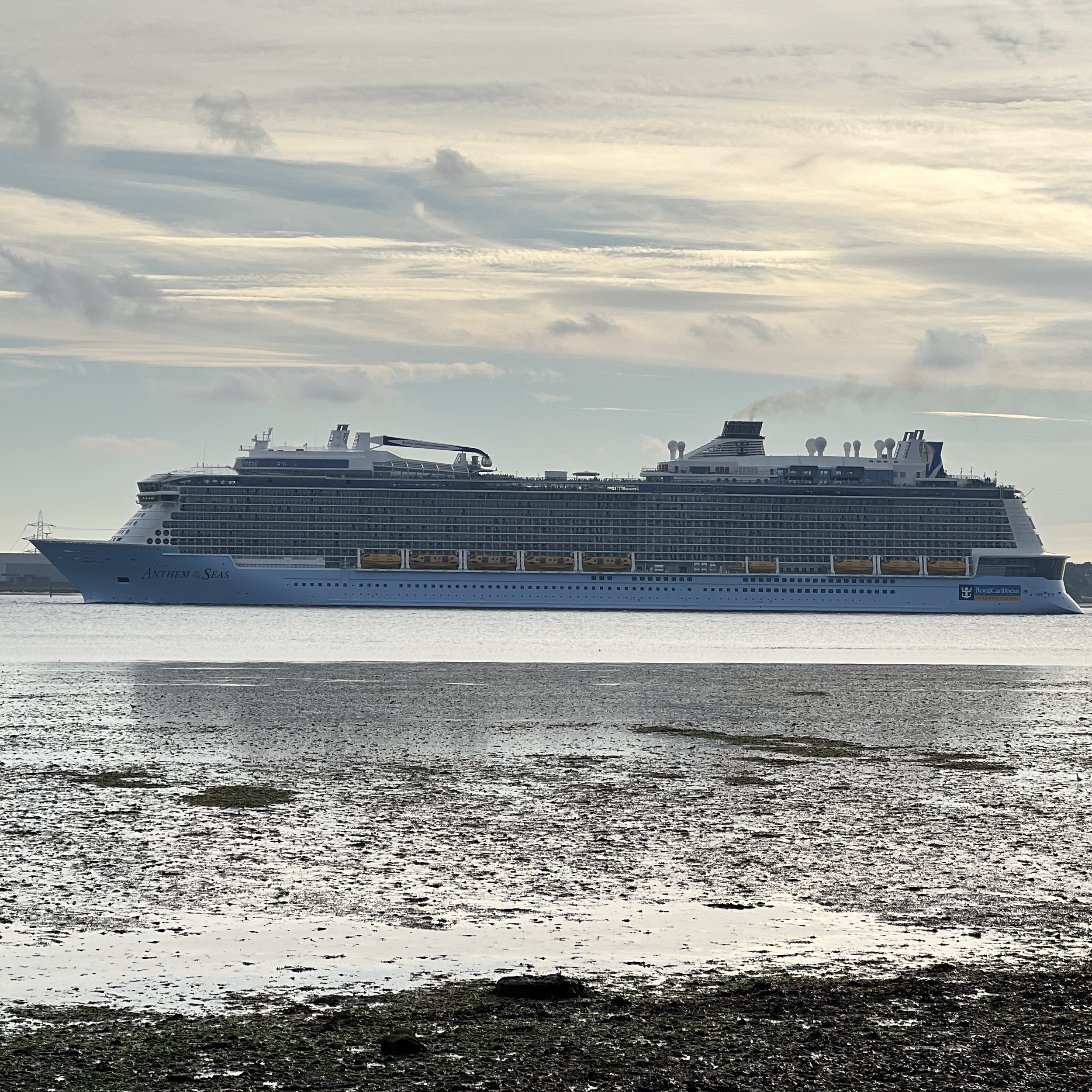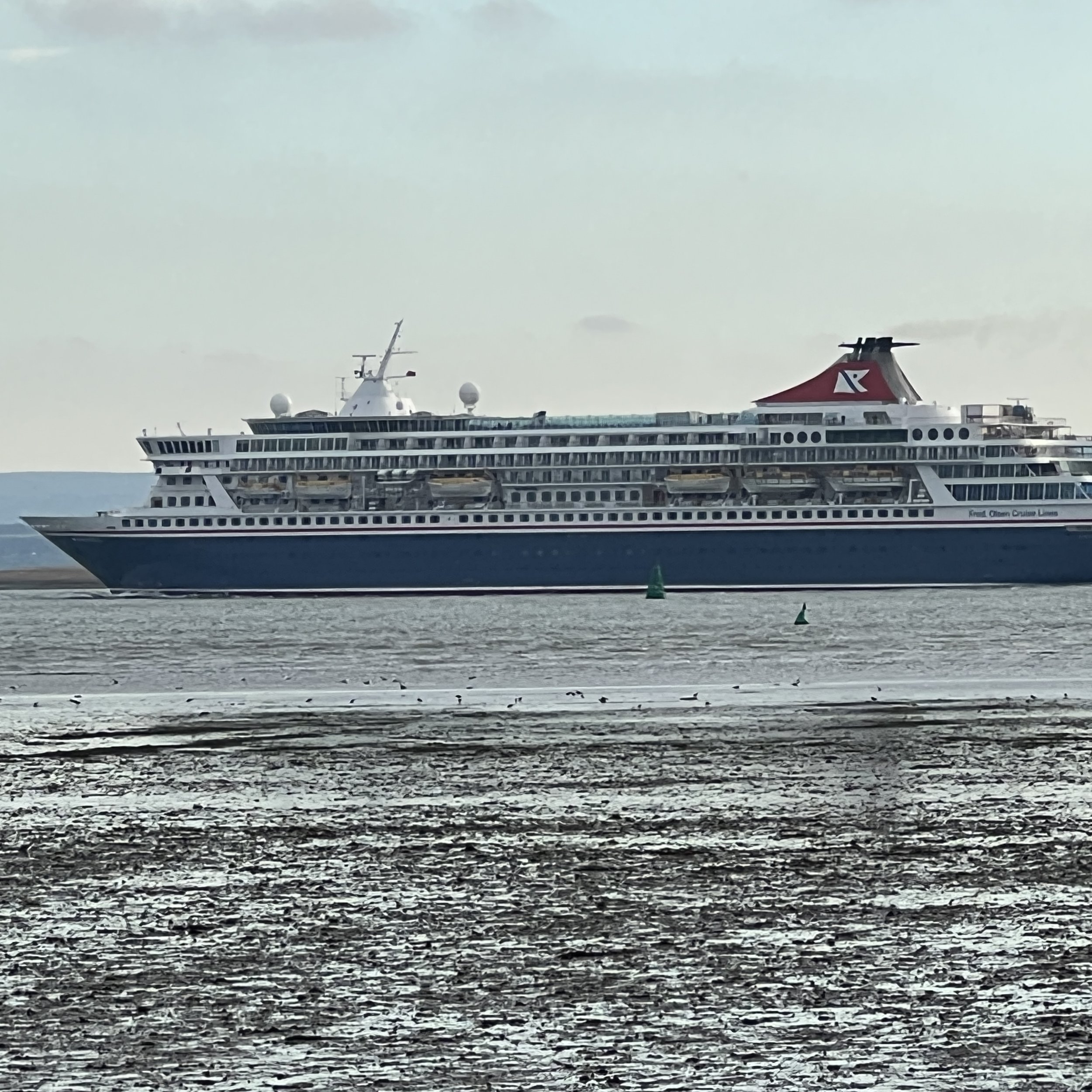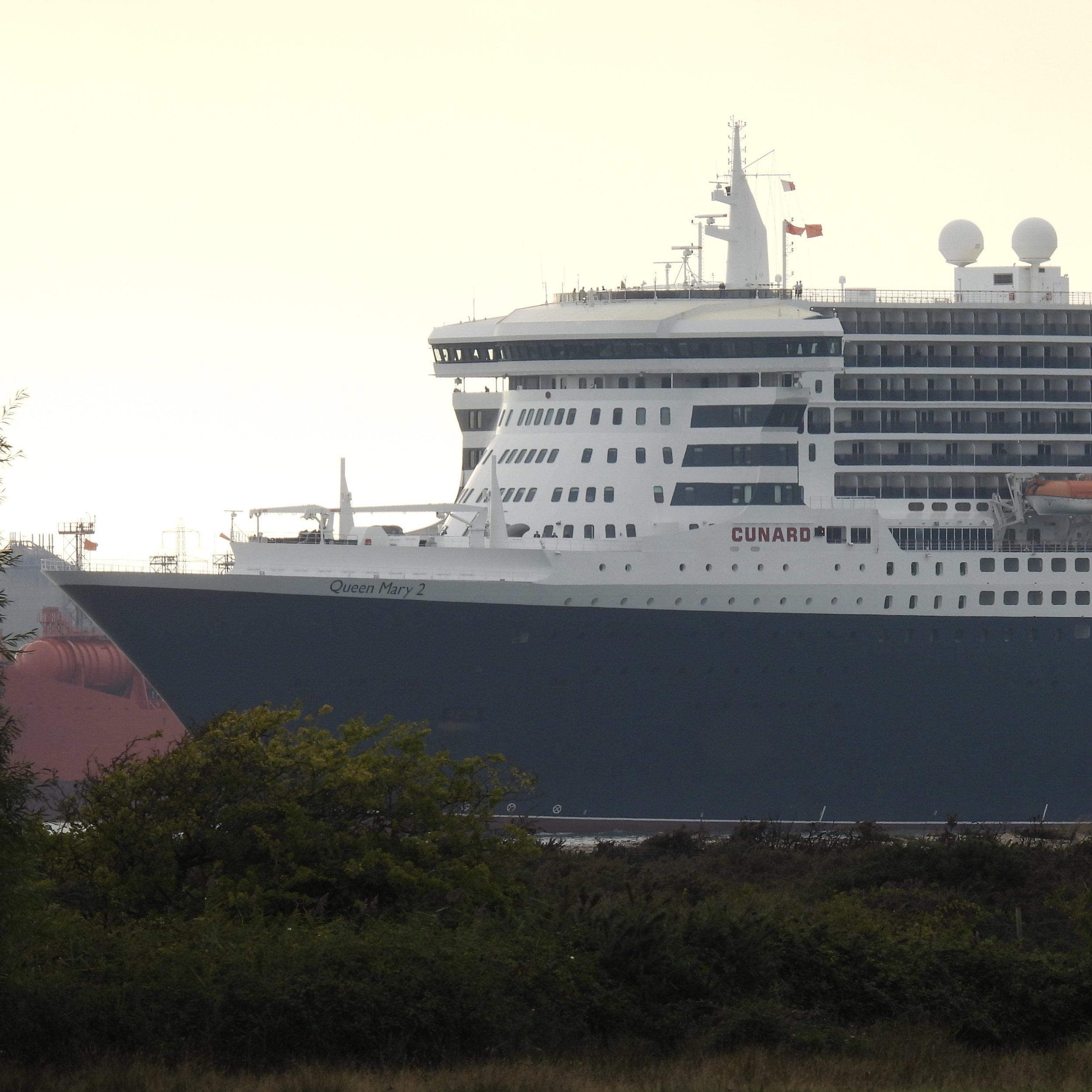Location: Hook with Warsash on the River Hamble near Southampton.
Target Species: Glossy Ibis
Our original idea was to visit this site for reconnaissance for future trips and then drive the 5 miles or so to Titchfield Haven to spend the rest of the day. Although we knew from recent eBird reports that Glossy Ibis had been seen there, we were not sure if they would still be around.
We arrived at the Passage Lane Pay & Display car park which had toilets but, unfortunately, these were shut. Fab - NOT!
We had previously found a spot on Google maps in Hook Park Road where we thought we could park to walk down to the coast, so we drove there and luckily found a parking space.
A ‘comfort break’ was becoming more urgent, so we decided to leave our rucksacks, tripod and drinks in the car and just take our binoculars and my camera with us. We intended to walk down to the water’s edge and have a quick look around before leaving for Titchfield Haven, knowing they had a cafe and toilets there.
As soon as we left the car we could hear birds calling in the trees, and making our way down a small tree-lined path towards the sea we spotted the species we might expect in thinly wooded areas alongside fields: Wood Pigeon, Magpie, Robin, Dunnock, Nuthatch, Long-tailed Tit, Blue Tit and Great Tit. There was a Cetti’s Warbler calling and a Kestrel and some Barn Swallows flying overhead.
At the end of the path we could see a shingle beach ahead. We came across another birder, carrying a scope, tripod and camera and asked him what he'd seen. He mentioned that there had been 4 Glossy Ibis a short way down the coast, which was great news. He said they had been flying around, but we decided to walk along the coast a little in case they were still there.
Sandwich Tern. Note the yellow tip to the black bill.
Keeping the incoming sea to our right, we wandered along the shingle beach. One of the first birds we saw was a Sandwich Tern, flying up and down at the edge of the tide, fishing.
On the landward side of the path was some scrub, with a large lake ahead. We saw several Stonechat there and a couple of Winchats, a species we've gone our whole lives without seeing, and now we've seen them twice in two weeks!
From there I scanned the lake with my binoculars. It was still some way off, but I saw a Grey Heron, a Little Egret, and some ducks which I couldn’t quite identify at that distance.
I also saw a dark bird that was about the size of a Little Egret, but with a curved bill. I immediately thought this must be the Glossy Ibis, and I took some (poor) photos and video in case it flew away.
We hoped to get a better view, but as we moved closer, the bird flew to the back of the lake.
Because we were only going to have a quick walk, we hadn't taken our scope or tripod with us. So any photos taken with the zoom camera were destined to be blurred and the video shaky.
A Glossy Ibis takes to flight
At the edge of the lake nearest us, we saw some Wigeon. It’s a duck we have only recently become familiar with. Although some had their heads under their wings, others were preening and we could see the large white wing patches. There were lots of Black-headed Gulls resting on the island in the lake. At this point the tide was coming in so birds were starting to arrive and a large group of Black-tailed Godwits flew in, their white wing bars and black tail with legs protruding clear to see.
Although we hadn’t been able to get a closer view of the Ibis, we were happy with the sighting as it was another lifer, taking me to 173 species for the year.
We walked on a little further to an area that had been burnt in some previous fire. The area beyond the fence was still green and there were quite a few Stonechats flying up from gorse and bramble to catch insects. John spotted a Northern Wheatear and I saw a couple of Mediterranean Gulls, all white with a surprisingly chunky breast (I thought they were slimmer, like Black-headed Gulls).
While standing there we got chatting to a woman named Julia who was there with her mother. She told us a bit more about what birds had been seen and her mother mentioned that if we carried on down the beach, we could follow a path that went back inland which would take us back to where we had parked.
At that point, I didn’t really fancy such a long walk because I really needed to have that comfort break. But as it turned out, we got kind of caught up in birding and that kept us going. I wish we had taken our wattle bottles though because it was quite hot and we were out for a lot longer then we had intended.
As we walked further down we found what I think were described as meander pools, areas of deeper water that form when a river bends around rocks or other obstacles. It seemed to be a popular point with Teal, a Little Egret and a couple of Glossy Ibis.
After watching for a white we found the path that went inland. We followed that past reed beds that might be good for Bearded Tits or Water Rail, though we saw none.
When we were almost back on the road we noticed on a reserve information sign that there was a path across a common that was likely to be a more pleasant walk back to our car.
We took that route, without seeing anything more exciting than a Blackbird, but just as we got back to the car, I could hear some high pitched calls, which were probably Goldcrest, but I thought I'd use Merlin sound ID just to be sure.
It identified the Goldcrest, and said Firecrest was present.
Firecrest is one of the species we'd really like to see this year. So we spent a little bit of time looking for that, unfortunately with no luck. However, the Goldcrest that we could see was singing very loudly. John noted that it was displaying its crest really well, which I could see too.
Three people walking their dogs stopped to ask what we'd seen. We tried to point out the Goldcrest (but they are quite tiny and there was lots of foliage) so I told them about the Merlin app and showed them how they could identify birds with it. They said they would download it. So a shout out to Deb, Mark and the boys - I hope that they found our chat helpful.
John and I looked around for a bit longer, really hoping we would see a Firecrest, but it wasn’t to be.
So we got in the car and drove back on our way to Titchfield Haven. By this time, I really did need a comfort break.
A couple of minutes later we found a nearby Co-op with a carpark opposite with toilets! Yes!
We bought lunch in the Co-op and reassessed our plans. It was already about 2pm and the reserve at Titchfield Haven closes at 4:30. We decided to go back to the meander pools and hopefully have further views of the Glossy Ibis. Also, the tide would be on its way out and we'd likely see more waders.
So, suitably refreshed, went to Cowes Lane, which we had walked through earlier, noticing cars were parked there. It gave us quicker access to the pools where the Glossy Ibis had been.
Just before settling in to watch the Glossy Ibis, we watched the Sandwich and Common Terns that were feeding on the edge of the tide. Four Sanderlings made a surprise stop - well done to John for spotting them!
This time I had my tripod and was able to take some steadier video of the Ibis and other birds.
While I was filming a young lad came up and started talking to us. He was out with his mum and younger brother and watching the birds. He clearly knew lots about birds in general and was telling us all sorts of bird facts. I spoke with his mum, Joy, and she told us Rufus is 8 years old and a member of the Hampshire Ornithological Club. He recently gave a talk with other young members that was watched by naturalist Chris Packham! Although he’s a youngster he clearly has a passion for birding, which was wonderful to see. I look forward to hearing about him in the future as one of our top birders.
A silhouetted Glossy Ibis feeding at the edge of the receding tide
While we were talking to Rufus and Joy, some Oystercatchers flew past over the water. There were several waves of them - clearly the tide had got low enough to reveal suitable feeding areas. They were the most numerous species we saw that day.
It was quite difficult looking at the flats where the waders were because the sun was on it and the water was sparkling.
Some of the Black-tailed Godwits flew out from the meander pools onto the exposed sand and shallows, along with the Glossy Ibis we had been watching. Silhouetted on the sand, I thought about how much the Ibis reminded me of a curlew, and if I had only seen them in silhouette like that would I have been able to tell them apart.
As the day drew to a close we watched three cruise ships sailing down Southampton water on their way out to the English Channel: the Royal Caribbean Anthem of the Seas which was enormous, like a floating city, followed by the Fred Olsen Balmoral, and finally, Cunard’s Queen Mary 2.
While we were watching this last ship sail past, we had stopped to look over a gate into a field they protect for breeding birds. We didn’t see any other birds but we did see a deer!
So, a great site, and it's even better knowing there is a nearby Co-op and public toilets.
Number of Species seen: 43
Lifers: 1 (Glossy Ibis)
2022 Year list: 173 (John’s year list is now at 177)!
eBird trip report: https://ebird.org/tripreport/75518
